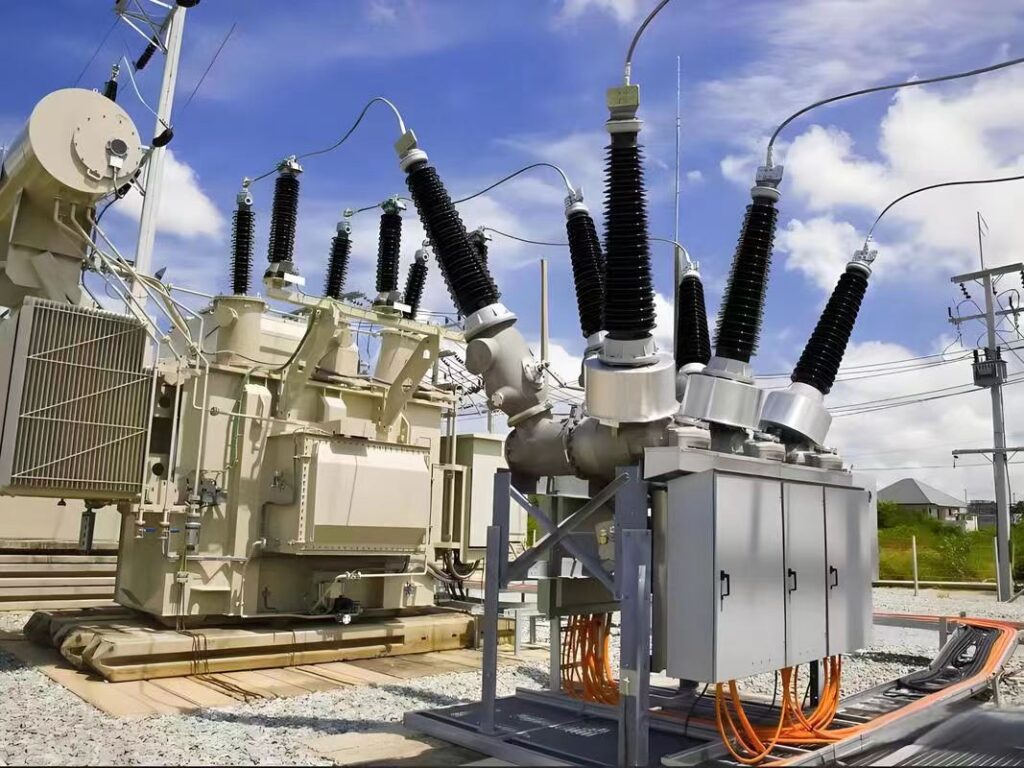Electric power systems rely on more than just generating electricity—they need to transport it efficiently and deliver it safely. This is where transformers come in. The main use of a transformer is to change voltage levels—either increasing it for long-distance transmission or decreasing it for safe, local use. This simple function plays a critical role in the global energy infrastructure.
What Is the Core Function of a Transformer?
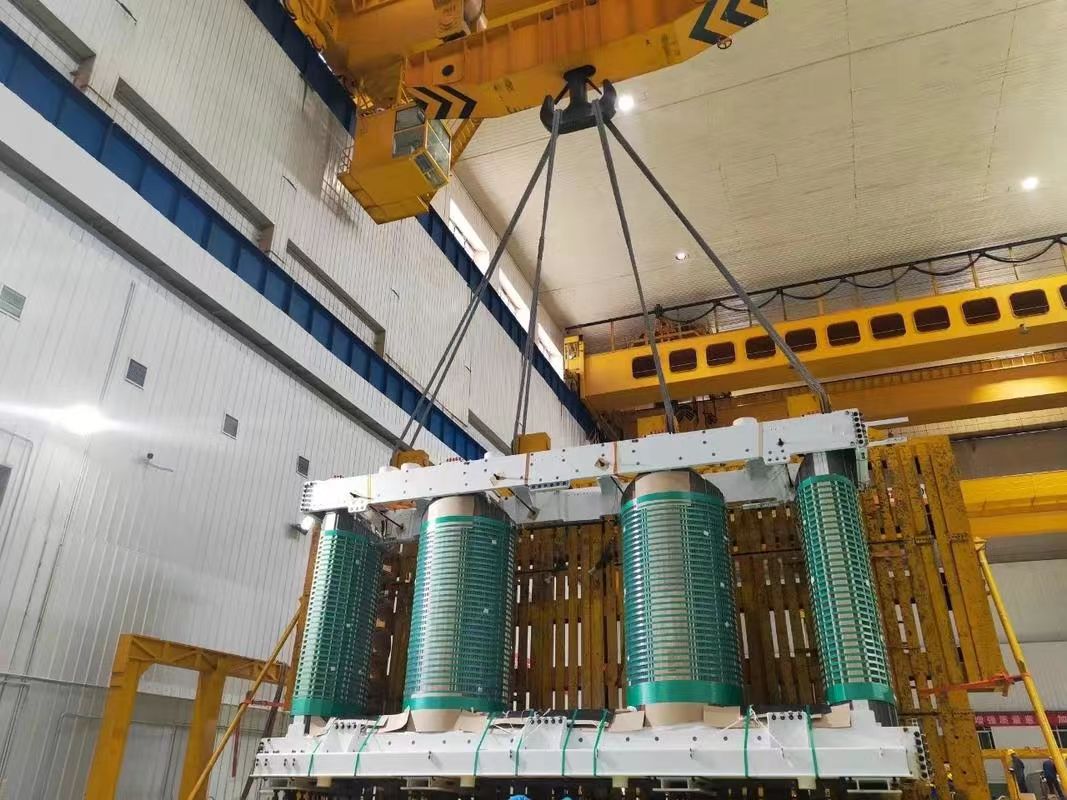
Electricity doesn’t flow the same way across every stage of a power system. Generators produce it at a certain voltage, transmission systems need it at higher levels, and homes and factories require it much lower. Without a way to adapt these voltages precisely and safely, power grids would be inefficient, unstable, and even dangerous. The one device that makes all this work—is the transformer.
The core function of a transformer is to change the voltage level of alternating current (AC) electricity—either stepping it up to higher voltages for efficient transmission or stepping it down for safe distribution and usage—without altering its frequency or waveform. This voltage transformation is achieved through electromagnetic induction between its primary and secondary windings.
In this article, we’ll explain the transformer’s fundamental role in electrical systems, how it performs voltage conversion, and why this function is essential across power generation, distribution, and consumption.
The core function of a transformer is to change AC voltage levels using electromagnetic induction.True
This allows safe and efficient electricity transmission over long distances and proper voltage delivery to end users.
Transformers generate electricity by themselves.False
Transformers only convert voltage levels; they do not generate power. Electricity is produced by generators.
1. Understanding the Basic Function: Voltage Transformation
| Element | Role in Voltage Conversion |
|---|---|
| Primary winding | Receives AC input from the power source |
| Magnetic core | Transfers magnetic flux to the secondary winding |
| Secondary winding | Induces a new voltage based on turns ratio |
Voltage Ratio Formula:
$$\frac{V_2}{V_1} = \frac{N_2}{N_1}$$
- $V_1$ = Primary voltage
- $V_2$ = Secondary voltage
- $N_1$, $N_2$ = Number of turns in the primary and secondary windings
The number of wire turns directly determines the change in voltage.
2. Step-Up vs. Step-Down Transformers
| Transformer Type | Function | Where It’s Used |
|---|---|---|
| Step-up | Increases voltage | Power plants → Transmission lines |
| Step-down | Decreases voltage | Transmission → Distribution → Homes |
Both types use the same working principle—only the winding ratio changes.
3. Why Voltage Conversion Is Necessary
| Objective | Transformer Contribution |
|---|---|
| Efficient power transmission | High voltage reduces current and energy losses |
| Safe electricity delivery | Lower voltage prevents equipment damage |
| Compatibility with devices | Adapts voltage to match appliance ratings |
| Grid synchronization | Matches voltages across regional networks |
Transformers enable the flexibility and safety needed for a multi-stage power grid.
4. Where Voltage Transformation Happens in the Grid
| Grid Stage | Transformer Used | Voltage Change Example |
|---|---|---|
| Power generation | Step-up transformer | 11 kV → 400 kV |
| High-voltage transmission | Power transformer | 400 kV maintained |
| Substation step-down | Distribution transformer | 400 kV → 33 kV or 11 kV |
| End-user delivery | Service transformer | 11 kV → 400/230 V |
At every transition point, a transformer adjusts the voltage appropriately.
5. What Transformers Don’t Do
| Myth | Reality |
|---|---|
| “Transformers store energy” | ❌ They don’t store—just transfer instantaneously |
| “They work with DC power” | ❌ Standard transformers only work with AC |
| “They generate electricity” | ❌ Only generators create electric power |
Their sole function is voltage conversion through electromagnetic induction.
6. Transformer Efficiency and Design Considerations
| Factor | Impact on Core Function |
|---|---|
| Core material (e.g. CRGO) | Affects magnetic loss and voltage regulation |
| Winding quality | Impacts energy transfer and heat dissipation |
| Cooling method (oil/air) | Maintains stable operation under load |
| Tap changers (OLTC/DETC) | Allow minor voltage adjustments |
A well-designed transformer can achieve >98% efficiency, preserving energy while changing voltage.
Summary Table: The Core Function of a Transformer
| Core Role | Description |
|---|---|
| Voltage conversion | Step-up or step-down AC voltage as needed |
| Electromagnetic energy transfer | Magnetic induction moves power between windings |
| No frequency change | Maintains waveform and frequency of supply |
| Supports grid infrastructure | Used in all stages: generation, transmission, distribution |
| Safety and efficiency enabler | Ensures power reaches users safely and efficiently |
Why Is Voltage Conversion Important in Power Systems?
Electric power systems deliver electricity over vast distances—from power plants to cities, homes, and factories. However, electricity generated at one voltage cannot always be transmitted or used efficiently at that same level. Without proper voltage conversion, the grid would suffer from inefficiencies, safety hazards, and major equipment compatibility issues. Transformers, through voltage conversion, enable cost-effective, reliable, and safe power transmission and usage.
Voltage conversion is critically important in power systems because it allows for efficient long-distance transmission by stepping up voltage, enables safe usage by stepping it down for homes and businesses, matches equipment voltage requirements, and reduces transmission losses by minimizing current flow. It also allows for flexible system design and fault isolation.
This article explains why changing voltage levels is essential, how it benefits power flow from generation to end use, and what would go wrong without it.
Voltage conversion is essential to reduce losses, enhance safety, and ensure compatibility across the power grid.True
By changing voltage levels through transformers, utilities achieve efficient power transmission and safe delivery to consumers.
Electricity can be transmitted and used efficiently at the same voltage it was generated.False
Without voltage conversion, current would be too high for long-distance transmission, resulting in massive energy losses.
1. Efficient Long-Distance Power Transmission
| Factor | Impact Without Voltage Conversion |
|---|---|
| Current magnitude | High if voltage is low → greater losses |
| Power loss formula | $P_{\text{loss}} = I^2R$ |
| Transmission voltage range | 132 kV to 765 kV |
| Loss reduction strategy | Step-up voltage → lower current |
Without stepping up the voltage at generation sites, transmission over long distances would be impractical due to high I²R losses.
2. Safe Power Distribution to End Users
| Voltage Level | Application Area | Safety Concern if Too High |
|---|---|---|
| 11–33 kV | Distribution lines | Dangerous for homes |
| 230/400 V | Residential/commercial | Safe, appliance-compatible |
| < 50 V | Low-voltage control | Used for electronics, lighting |
Voltage must be stepped down via transformers to levels safe for homes, tools, and everyday electronics.
3. Matching Voltage to Equipment Specifications
| System or Appliance | Voltage Requirement | What Happens Without Conversion |
|---|---|---|
| Industrial motors | 415 V or 660 V | Undervoltage = torque issues |
| Residential appliances | 230 V (Europe), 120 V (US) | Overvoltage = burnout |
| Electronics and AV gear | 5–48 V (via adapters) | Unusable or dangerous |
Voltage conversion ensures equipment receives power within its design limits, preventing damage.
4. Enabling Flexible System Design
| System Feature | Enabled by Voltage Conversion |
|---|---|
| Multi-voltage grid | Different levels for transmission, distribution, usage |
| Distributed generation | Allows local plants to sync with the grid |
| Load zoning | Supports tailored voltages per area/load type |
| Microgrids and renewables | Integrates solar, wind, batteries |
Voltage adaptability through transformers supports scalable and diverse grid architecture.
5. Reducing Infrastructure Costs
| Without Voltage Conversion | Cost Implication |
|---|---|
| High current transmission | Requires thick, expensive conductors |
| No voltage adaptation | Equipment needs frequent replacement |
| Poor power factor control | Inefficient reactive power usage |
High-voltage transmission allows the use of lighter conductors, smaller towers, and less thermal loss, saving billions annually.
6. Supporting Fault Isolation and Grid Protection
| Protection Function | Role of Voltage Conversion |
|---|---|
| Sectional fault isolation | Uses voltage-based relays and fuses |
| Voltage regulation zones | Controls and limits fault propagation |
| Step-down for safe clearing | Ensures safety when faults occur near users |
By segregating grid sections with transformers, utilities can isolate and manage faults more effectively.
Summary Table: Why Voltage Conversion Is Important
| Benefit | How Voltage Conversion Helps |
|---|---|
| Transmission efficiency | Reduces current → less energy loss |
| Public safety | Delivers power at safe, usable voltages |
| Equipment protection | Matches device voltage requirements |
| Grid scalability | Enables multi-voltage architecture |
| Economic savings | Cuts down cable, tower, and cooling costs |
| Fault protection | Allows relay coordination and sectional control |
How Do Transformers Support the Power Grid?
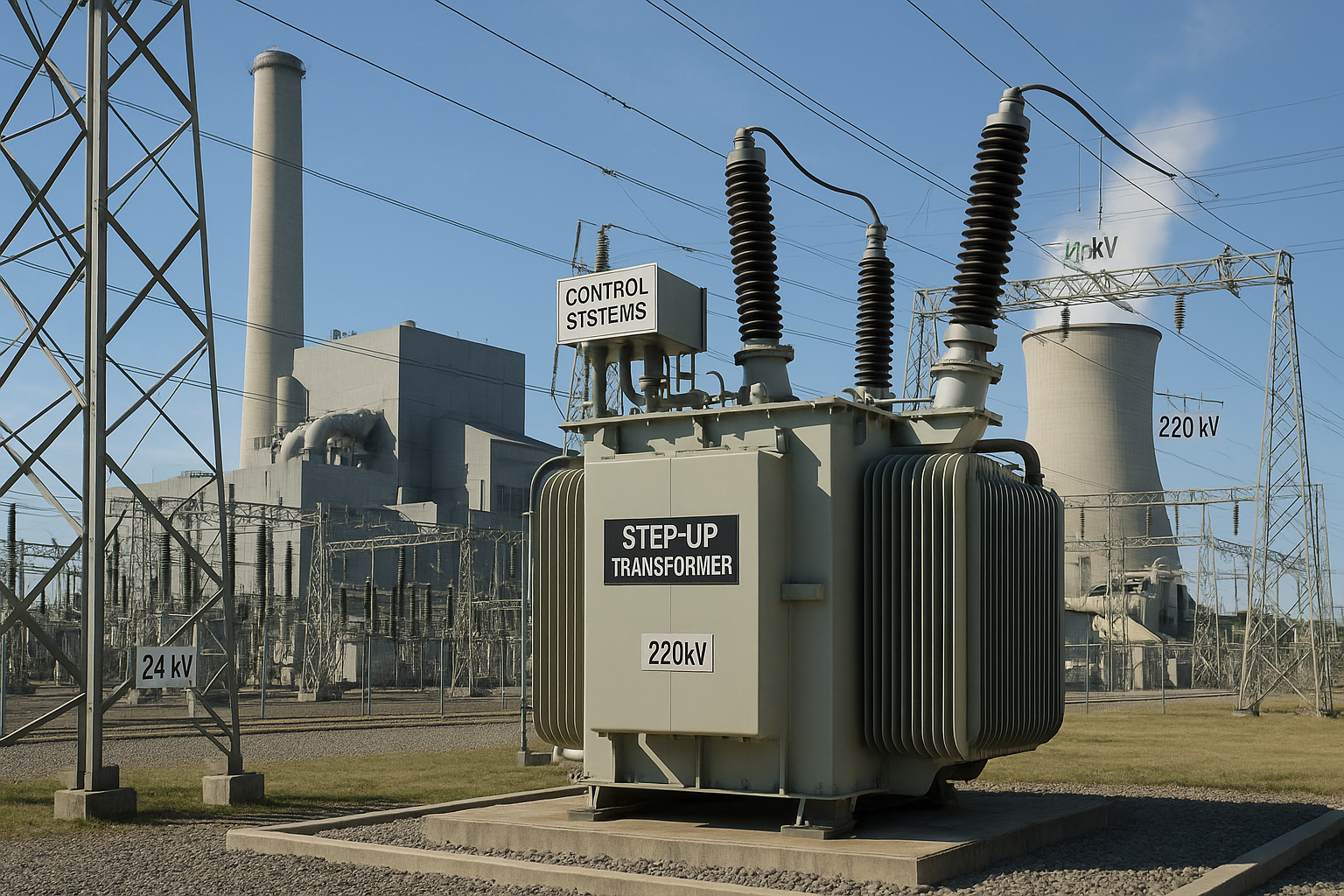
Behind the scenes of every switch flipped and appliance powered is a complex electrical network known as the power grid. To keep electricity flowing safely and efficiently across cities, regions, and even nations, the grid relies on one essential component: the transformer. Without it, power systems would suffer from voltage instability, poor distribution, high losses, and frequent blackouts. Transformers are the backbone that allows the grid to function seamlessly across varied voltage levels and geographic zones.
Transformers support the power grid by enabling voltage conversion for efficient transmission and distribution, providing electrical isolation, regulating voltage for system stability, enabling grid synchronization, and protecting against faults. They form critical nodes in substations and across transmission and distribution networks, ensuring reliable power flow from generation to end users.
This article explores the various ways transformers strengthen, stabilize, and sustain the grid’s performance at every level.
Transformers are vital to the power grid for voltage management, fault protection, and energy transfer across different voltage levels.True
Without them, electricity could not be efficiently transmitted or safely distributed.
The power grid can operate efficiently without transformers.False
Transformers are required to convert and regulate voltage across the grid. Without them, transmission losses would be excessive and power delivery unsafe.
1. Voltage Conversion Across the Grid
| Grid Section | Transformer Function | Voltage Level Example |
|---|---|---|
| Power generation | Step-up for transmission efficiency | 11 kV → 400 kV |
| Long-distance transmission | Maintain high voltage flow | 400 kV maintained |
| Regional substations | Step-down to medium voltage | 400 kV → 132/66/33 kV |
| Distribution transformers | Final step-down for consumers | 11 kV → 400/230 V |
Transformers allow the grid to match voltage levels to technical and safety requirements throughout the system.
2. Reducing Power Losses in Transmission
| Technical Factor | With Transformers | Without Transformers |
|---|---|---|
| Transmission current | Low due to high voltage | High current causes more I²R losses |
| Line conductor size | Smaller, more cost-effective | Larger, heavier, more expensive |
| Loss formula | $P_{\text{loss}} = I^2R$ | Exponentially worse at low voltage |
Transformers reduce current flow by stepping up voltage, helping minimize transmission line losses.
3. Voltage Regulation for Grid Stability
| Condition | Transformer Response |
|---|---|
| Load fluctuation | On-load tap changers adjust output voltage |
| Reactive power issues | Voltage controlled via capacitor switching |
| Distant consumer loads | Line drop compensated with automatic tap setting |
Transformers help maintain voltage within ±5%, critical for stable grid operation and end-user satisfaction.
4. Providing Electrical Isolation
| Grid Zone | Isolation Role |
|---|---|
| Generation → transmission | Protects sensitive generator equipment |
| Transmission → distribution | Prevents fault propagation across zones |
| Distribution → end-user | Separates grid faults from customer loads |
By isolating parts of the grid, transformers enhance fault containment and system resilience.
5. Synchronizing Regional Grids and Loads
| Synchronization Need | Transformer Contribution |
|---|---|
| Phase and polarity matching | Vector group alignment |
| Inter-grid connections | Tie transformers with phase shift capability |
| Load balancing | Auto-transformers equalize power flows |
Transformers ensure different grid sections stay in sync, especially in complex multi-regional systems.
6. Fault Detection and Protection
| Protection System | How Transformers Help |
|---|---|
| Differential protection | Detects internal transformer faults |
| Overcurrent relay | Trips on excessive load or short circuit |
| Buchholz relay | Detects gas buildup in oil-filled units |
| Surge arresters | Divert voltage spikes from lightning/switching |
Modern transformers are integrated with relays, fuses, and smart monitoring for fault detection and grid safety.
7. Flexible Grid Design and Expansion
| Grid Function | Transformer Role |
|---|---|
| Substation planning | Allows multi-voltage design in one station |
| Renewable integration | Steps up solar/wind voltage for grid export |
| Microgrid compatibility | Connects low-voltage generation to main grid |
| Emergency routing | Allows rerouting power during faults/outages |
Transformers enable modular, scalable, and resilient grid architecture.
Summary Table: How Transformers Support the Power Grid
| Function | Transformer Contribution |
|---|---|
| Voltage transformation | Matches generation, transmission, and usage |
| Loss reduction | Enables high-voltage transmission |
| Isolation and protection | Localizes faults and enhances safety |
| Voltage regulation | Stabilizes voltage under load variation |
| Grid synchronization | Aligns phase and voltage between networks |
| Flexibility and scalability | Adapts to renewable, urban, and rural systems |
Where Are Transformers Used Most Frequently?
Transformers are everywhere in modern power systems—often unnoticed but absolutely essential. They serve as the connective tissue of the grid, changing voltage levels at every critical point from electricity generation to final consumption. Their strategic placement allows for voltage matching, safety, fault isolation, and efficiency. Without transformers at these key locations, the grid would not function reliably or economically.
Transformers are used most frequently at power generation plants, high-voltage transmission substations, regional distribution substations, industrial facilities, commercial centers, residential neighborhoods, and renewable energy sites. At each location, they perform voltage conversion, load balancing, and system protection.
This article outlines where transformers are most commonly deployed, their purpose at each location, and why they’re indispensable to modern infrastructure.
Transformers are widely used throughout the power grid to adjust voltage levels and ensure efficient and safe power delivery.True
Their most frequent use is at critical grid points such as power plants, substations, industrial loads, and residential feeders.
Transformers are only used in high-voltage power plants and not needed elsewhere in the grid.False
Transformers are also critical in distribution, residential, and commercial environments where voltage adaptation and safety are essential.
1. Power Generation Stations
| Purpose | Transformer Type | Voltage Role |
|---|---|---|
| Export to transmission grid | Step-up transformer | 11–25 kV → 132/220/400/765 kV |
| Generator protection | Unit transformers (UT) | Interface between generator and grid |
| Grid stability support | Auto-transformers | Maintain voltage balance |
Power plants use step-up transformers immediately after generation to enable long-distance transmission with minimal loss.
2. High-Voltage Transmission Substations
| Purpose | Transformer Type | Voltage Role |
|---|---|---|
| Interconnection of lines | Power transformer | 400 kV ↔ 220 kV or 220 kV ↔ 132 kV |
| Fault isolation | Impedance transformers | Limit fault current |
| Voltage control | Tap-changing transformers | Compensate load variations |
Substations are central transformer hubs for routing and voltage coordination between grid regions.
3. Distribution Substations
| Purpose | Transformer Type | Voltage Role |
|---|---|---|
| Step-down to local grids | Distribution transformers | 33/22/11 kV → 400/230 V |
| Load balancing | Three-phase transformers | Balance demand across phases |
| Power quality maintenance | Voltage regulators | Maintain steady supply voltage |
Most transformers in the grid are at the distribution level, serving towns, villages, and city blocks.
4. Industrial and Manufacturing Facilities
| Purpose | Transformer Type | Voltage Role |
|---|---|---|
| Power heavy machinery | Step-down transformers | 33/11 kV → 6.6/3.3/0.4 kV |
| Electrical isolation | Isolation transformers | Protect automation and PLC systems |
| Surge protection | Dry-type transformers | Resist dust, vibration, and temperature swings |
High-load industries require transformers at nearly every major piece of equipment for voltage matching and stability.
5. Commercial Complexes and Campuses
| Purpose | Transformer Type | Voltage Role |
|---|---|---|
| Safe power delivery | Indoor dry-type transformers | 11 kV → 400/230 V |
| Centralized control | Ring main units (RMU) | Feed multiple buildings |
| Energy efficiency | K-rated transformers | Serve sensitive electronics like HVAC and IT systems |
Shopping malls, data centers, hospitals, and universities rely on transformers for safe and balanced internal power distribution.
6. Residential Areas and Neighborhoods
| Purpose | Transformer Type | Voltage Role |
|---|---|---|
| Final voltage delivery | Pole-mounted or pad-mounted | 11 kV → 400/230 V |
| Domestic load balancing | Single-phase transformers | Serve 1–10 homes per unit |
| Rural electrification | Compact transformers | Withstand voltage drop and outages |
Most end-users interact with transformers through residential distribution, often without realizing it.
7. Renewable Energy Sites
| Purpose | Transformer Type | Voltage Role |
|---|---|---|
| Grid interfacing | Step-up transformers | 400/690 V (wind/solar) → 11/33 kV |
| Collector station coupling | Pad-mounted transformers | Sync multiple sources |
| Inverter isolation | Inverter transformers | Smoothen voltage, reduce harmonics |
Renewables like solar and wind farms depend on custom 110V to 33 kV+ transformers for export-ready voltage.
Summary Table: Where Transformers Are Most Frequently Used
| Location | Primary Function | Typical Voltage Conversion |
|---|---|---|
| Power plants | Step-up to transmission level | 11 kV → 400/765 kV |
| Transmission substations | Voltage interconnection, fault management | 400 kV ↔ 220/132 kV |
| Distribution substations | Supply towns or cities | 33/22/11 kV → 400/230 V |
| Factories and industrial sites | Feed motors, machines, control systems | 11/6.6/3.3 kV → 400/230 V |
| Commercial complexes | Manage power internally, support IT loads | 11 kV → 400/230 V |
| Residential neighborhoods | Final voltage step-down | 11 kV → 230 V (homes), 400 V (buildings) |
| Renewable installations | Integrate variable generation to the grid | 400–690 V → 11/33/66 kV |
How Do Transformers Enable Electrical Safety?
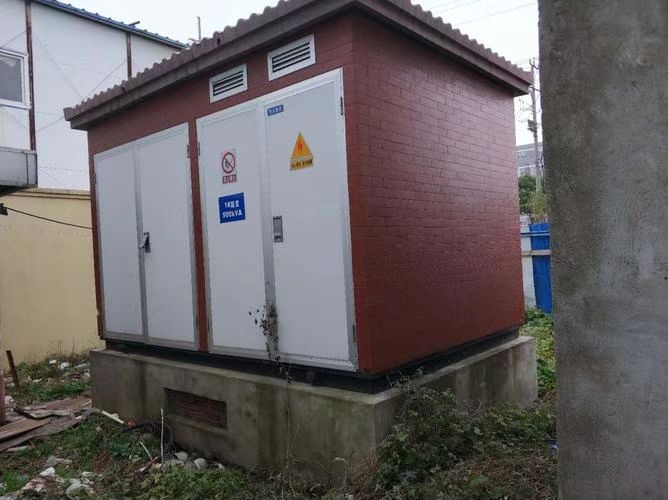
Electricity is powerful—but without control, it’s also dangerous. High voltages can cause electrocution, equipment damage, arc flash, and fire hazards. Whether you're powering a single lightbulb or an entire factory, safety must be built into every stage of power delivery. Transformers, often seen as voltage-converting devices, are critical enablers of electrical safety in power systems, industrial environments, and homes.
Transformers enable electrical safety by providing galvanic isolation, adjusting voltage to safe levels, supporting grounding systems, absorbing electrical faults, and incorporating protective devices such as circuit breakers, fuses, and surge arresters. These functions minimize the risk of electric shock, fire, and equipment failure across the grid and end-user systems.
This article explores the mechanisms and design features that make transformers key players in delivering electricity safely and reliably.
Transformers provide safety through voltage regulation, electrical isolation, and fault protection.True
These features reduce shock risk, prevent overloads, and ensure safe operation for users and equipment.
Transformers only change voltage and do not contribute to electrical safety.False
Transformers also isolate circuits, reduce hazardous voltage, and contain faults—making them essential for system protection.
1. Galvanic Isolation Protects Against Fault Propagation
| Feature | Safety Contribution |
|---|---|
| Physically separate windings | Prevents direct electrical connection |
| Magnetic coupling only | Eliminates conductive path between circuits |
| Isolation transformer use | Ideal in medical, laboratory, and control settings |
This protects the secondary side from primary faults, such as surges or ground faults.
2. Voltage Step-Down Enables Safe Consumption
| Voltage Step | Application | Safety Impact |
|---|---|---|
| 11 kV → 400/230 V | Homes, businesses | Safe for people and appliances |
| 400 V → 110 V | Construction, wet sites | Reduces electrocution risk |
| 230 V → 24 V | Electronics, control panels | Harmless for direct human contact |
By stepping voltage down, transformers ensure electricity is delivered at levels that are usable and non-lethal.
3. Transformers Support Proper Grounding Systems
| Component | Safety Benefit |
|---|---|
| Grounded neutral (star point) | Stabilizes phase voltages and prevents floating |
| Bonded enclosures | Prevents metal parts from becoming energized |
| Center-tapped 110V output | Limits shock voltage to 55 V per conductor |
Proper grounding through transformer configurations minimizes shock hazard and improves fault clearing.
4. Fault Limitation and Protection Coordination
| Protection Mechanism | Transformer’s Role |
|---|---|
| Internal fuses | Isolate faults quickly inside windings |
| Buchholz relay (oil units) | Detects internal gas from winding failure |
| Overcurrent protection | Disconnects during short circuits or overload |
| Differential protection | Compares current in and out to detect winding faults |
These devices help contain and isolate electrical faults before they cause system-wide damage.
5. Lightning and Surge Protection
| Hazard | Transformer Safety Feature |
|---|---|
| Lightning strikes | Surge arresters redirect voltage spikes |
| Switching transients | Grounding and shielding absorb disturbances |
| Overvoltage events | Tap changers help stabilize fluctuating input |
Properly protected transformers divert or dampen sudden electrical surges, preventing fires and equipment failure.
6. Thermal Protection to Prevent Fires
| Condition | Transformer Safeguard |
|---|---|
| Overload or poor ventilation | Thermal sensors shut down the system |
| Oil overheating | Temperature relays trigger cooling or alarm |
| Insulation degradation | DGA (Dissolved Gas Analysis) detects early warning signs |
Overheating is a major fire risk—transformers are equipped to detect and mitigate heat buildup.
7. Design Standards That Ensure Safety Compliance
| Standard | Governing Body | Covered Safety Aspects |
|---|---|---|
| IEC 60076 | IEC (Global) | General transformer design and testing |
| IEEE C57 series | IEEE (USA) | Oil-filled, dry-type, and protective features |
| UL 5085 / UL 1446 | UL (North America) | Low-voltage transformer safety |
| IS 2026 / IS 1180 | BIS (India) | Power and distribution transformer specs |
Compliance with these standards ensures safe, reliable performance under real-world grid and load conditions.
Summary Table: How Transformers Enable Electrical Safety
| Safety Function | Transformer Feature |
|---|---|
| Electrical isolation | Separate windings eliminate shock paths |
| Voltage regulation | Step-down to safe, user-friendly levels |
| Ground fault management | Star point grounding, bonded enclosures |
| Fault detection and clearing | Built-in fuses, relays, thermal protection |
| Surge suppression | Arresters, shielded windings, OLTC tuning |
| Fire prevention | Cooling systems, thermal monitoring |
| Code compliance | Built to international safety standards |
Are There Other Uses Besides Voltage Conversion?
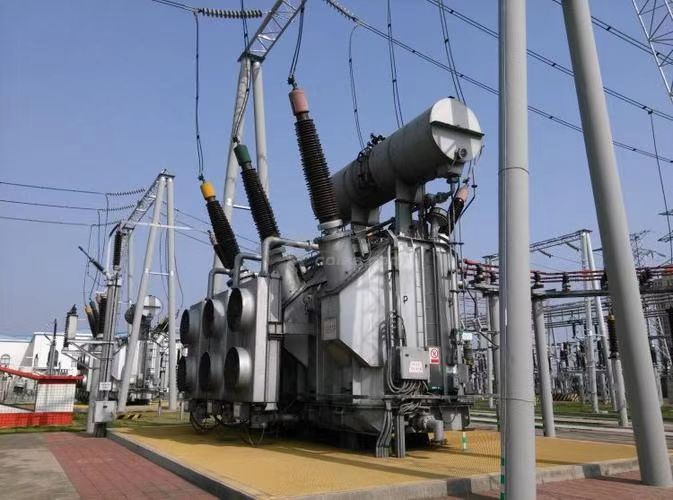
Transformers are universally recognized for one primary role: voltage conversion—stepping electricity up or down. But their contribution to electrical systems goes far beyond that. In fact, transformers serve many critical secondary roles that are often just as important, especially in specialized environments like audio systems, power grids, control panels, and telecommunications. Overlooking these functions means missing out on essential benefits like safety, efficiency, and signal integrity.
Besides voltage conversion, transformers are used for electrical isolation, impedance matching, signal conditioning, surge suppression, noise filtering, phase shifting, and fault protection. These functions are vital in power systems, industrial automation, audio equipment, instrumentation, and sensitive electronic circuits.
This article explores the lesser-known but highly important roles that transformers play in diverse applications beyond just stepping voltage up or down.
Transformers serve many functions beyond voltage conversion, including isolation, signal control, and noise suppression.True
In both power and electronic systems, transformers enhance safety, performance, and compatibility through multiple electrical functions.
Transformers are only used to change voltage levels and have no other use.False
They also provide isolation, match impedances, suppress interference, and help in power quality management.
1. Galvanic Isolation for Safety and Signal Integrity
| Application Area | Purpose of Isolation |
|---|---|
| Medical equipment | Prevents leakage current to patients |
| Audio systems | Stops ground loops and hum |
| Industrial controls | Prevents noise and voltage backfeed |
Isolation transformers allow energy transfer without a direct electrical connection, reducing shock and system faults.
2. Impedance Matching in Communication and Audio Systems
| Use Case | Transformer Function |
|---|---|
| Audio amplifier to speaker | Matches output impedance for max power transfer |
| Microphone preamps | Balances signal impedance |
| RF transmission | Matches transmitter to antenna |
Impedance matching transformers improve signal clarity, reduce reflections, and ensure maximum power transfer.
3. Signal Conditioning and Voltage Transformation in Electronics
| Use Case | Role of Transformer |
|---|---|
| Low-voltage control systems | Steps down voltage and isolates signals |
| Switching power supplies | Converts DC to high-frequency AC → back to DC |
| Telecom circuits | Prevents signal distortion and echo |
These small pulse or signal transformers help clean, regulate, and protect low-level electronic signals.
4. Surge Protection and Transient Suppression
| Fault Type | Transformer Role |
|---|---|
| Lightning strike | Coupled arresters protect transformer input |
| Switching surge | Impedance buffers sharp transitions |
| Line transient | Isolated output smooths voltage fluctuations |
Isolation and winding inductance help absorb or limit fast voltage spikes, improving safety and equipment life.
5. Noise Filtering in Sensitive Circuits
| Environment | Transformer Type |
|---|---|
| Audio engineering | Audio isolation transformer |
| Medical imaging rooms | Clean power transformers |
| Test labs and R\&D | Low-leakage toroidal transformers |
Transformers with electrostatic shields and balanced windings filter out EMI, harmonics, and ground noise.
6. Phase Shifting and Power Factor Control
| Purpose | Transformer Role |
|---|---|
| Grid synchronization | Phase-shifting transformers align waveforms |
| Harmonic control | Zigzag transformers help reduce distortion |
| Power factor correction | Controls load phase angle in industrial settings |
Transformers are key in advanced power quality strategies and multi-phase network control.
7. Current and Voltage Sensing (CTs and VTs)
| Function | Transformer Type |
|---|---|
| Measure current safely | Current Transformer (CT) |
| Monitor voltage levels | Voltage Transformer (VT or PT) |
| Feed protective relays | Instrument transformers for metering/protection |
CTs and VTs scale down high voltage/current for safe monitoring, often used in substations and power monitoring systems.
Summary Table: Functions of Transformers Beyond Voltage Conversion
| Function | Transformer Type | Application Area |
|---|---|---|
| Galvanic isolation | Isolation transformers | Medical, industrial, control systems |
| Impedance matching | Audio and RF transformers | Audio, telecom, radio |
| Signal conditioning | Pulse transformers, ferrite cores | Electronics, SMPS, communication |
| Noise filtering | Shielded transformers | Audio, test labs, hospitals |
| Surge and transient suppression | Isolation and impedance-based | Substations, telecom, defense |
| Phase control | Phase-shifting transformers | Grids, industrial motors |
| Instrumentation | CTs and VTs | Power metering, protection, automation |
Conclusion
The main use of a transformer is to adjust voltage levels—a crucial function for the efficient and safe operation of electrical systems. Whether stepping up voltage for transmission or stepping it down for daily use, transformers act as the silent facilitators of modern power infrastructure. Without them, delivering electricity over long distances or using it safely in homes and factories would not be possible.
FAQ
Q1: What is the main use of a transformer?
A1: The main use of a transformer is to change voltage levels in an electrical circuit. It either increases voltage (step-up) for long-distance transmission or decreases voltage (step-down) for safe usage in homes, businesses, and industries. This enables efficient and safe power delivery.
Q2: Why is voltage transformation important?
A2: Voltage transformation is crucial because:
High voltage reduces power loss during transmission
Low voltage ensures safety for appliances and people
Transformers make electricity transmission economical and practical over long distances.
Q3: Where is a transformer commonly used?
A3: Transformers are used in:
Power generation stations
Substations and distribution grids
Industrial plants
Commercial buildings and homes
Electronic devices (as adapters and chargers)
Q4: What types of transformers are used for this purpose?
A4: Common types include:
Power transformers (for high-voltage transmission)
Distribution transformers (for local voltage reduction)
Instrument transformers (for metering and protection)
Isolation transformers (for safety and noise reduction)
Q5: Can transformers be used in renewable energy systems?
A5: Yes. In solar and wind farms, step-up transformers increase the generated voltage for grid integration, while step-down transformers are used to supply usable power locally.
References
"Main Use of Transformers in Power Systems" – https://www.transformertech.com/main-use-transformers – Transformer Tech
"Why Transformers Are Essential to Electricity Supply" – https://www.powermag.com/transformer-main-purpose – Power Magazine
"Transformer Function and Applications" – https://www.electrical4u.com/transformer-use-cases – Electrical4U
"The Role of Transformers in Energy Transmission" – https://www.sciencedirect.com/transformer-transmission-role – ScienceDirect
"Transformers in Power Grids and Renewable Energy" – https://www.researchgate.net/transformer-grid-integration – ResearchGate
"Smart Grid News: Transformers in Modern Power Systems" – https://www.smartgridnews.com/transformer-use-smart-grid – Smart Grid News
"Energy Central: Why Use Transformers?" – https://www.energycentral.com/c/ee/why-transformers-are-essential – Energy Central
"PowerGrid: Understanding Transformer Applications" – https://www.powergrid.com/transformer-use-guide – PowerGrid


